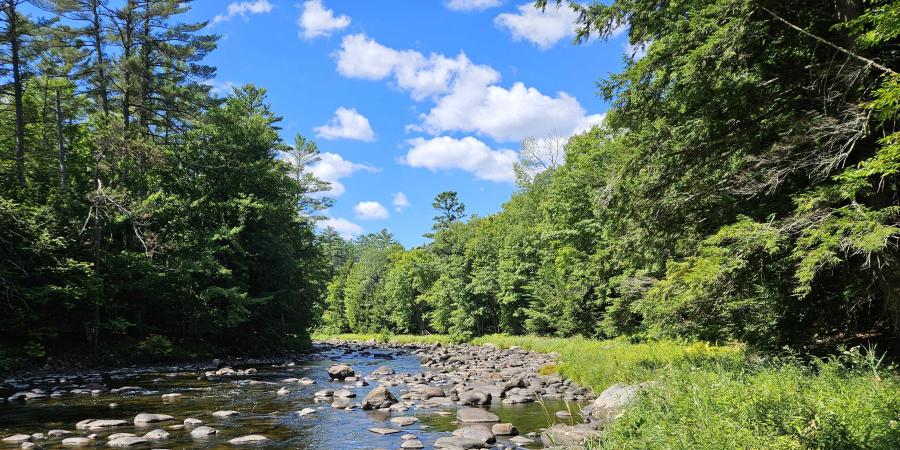How can you support the watershed as a landowner? If your property borders a stream, river, or lake, the vegetation growing alongside the bank matters. Even if your property doesn't border water, this blog is for you too because native pollinators and migratory songbirds rely on wild-growing native plants. One of the best ways to support the watershed and native ecosystems is also the simplest: leave a no-mow zone. This is one of the practices of Stream Wise, a toolkit for landowners to protect their stream buffers and support their watershed.
The no-mow zone is a 50-foot (minimum) buffer on both sides of your stream where no mowing or cutting takes place with the exception of pathways that enable access to the water. Leaving a no-mow zone in place means allowing the natural vegetation to grow, but you can also supplement with native trees. This creates a healthy stream buffer to prevent erosion and sediment runoff, protect the integrity of the streambank, and provide habitat and food for wildlife. One of the most important and simplest ways to protect your stream buffer is to allow vegetation to be wild and limit cutting and mowing.
While sometimes drastic measures are needed to rebuild or replant a streamside that has been the focus of intense human activity, many streams are just fine on their own. The best way to support them is to allow natural, native vegetation to take over next to the stream (or, if you don't have a stream, in your chosen no-mow area).
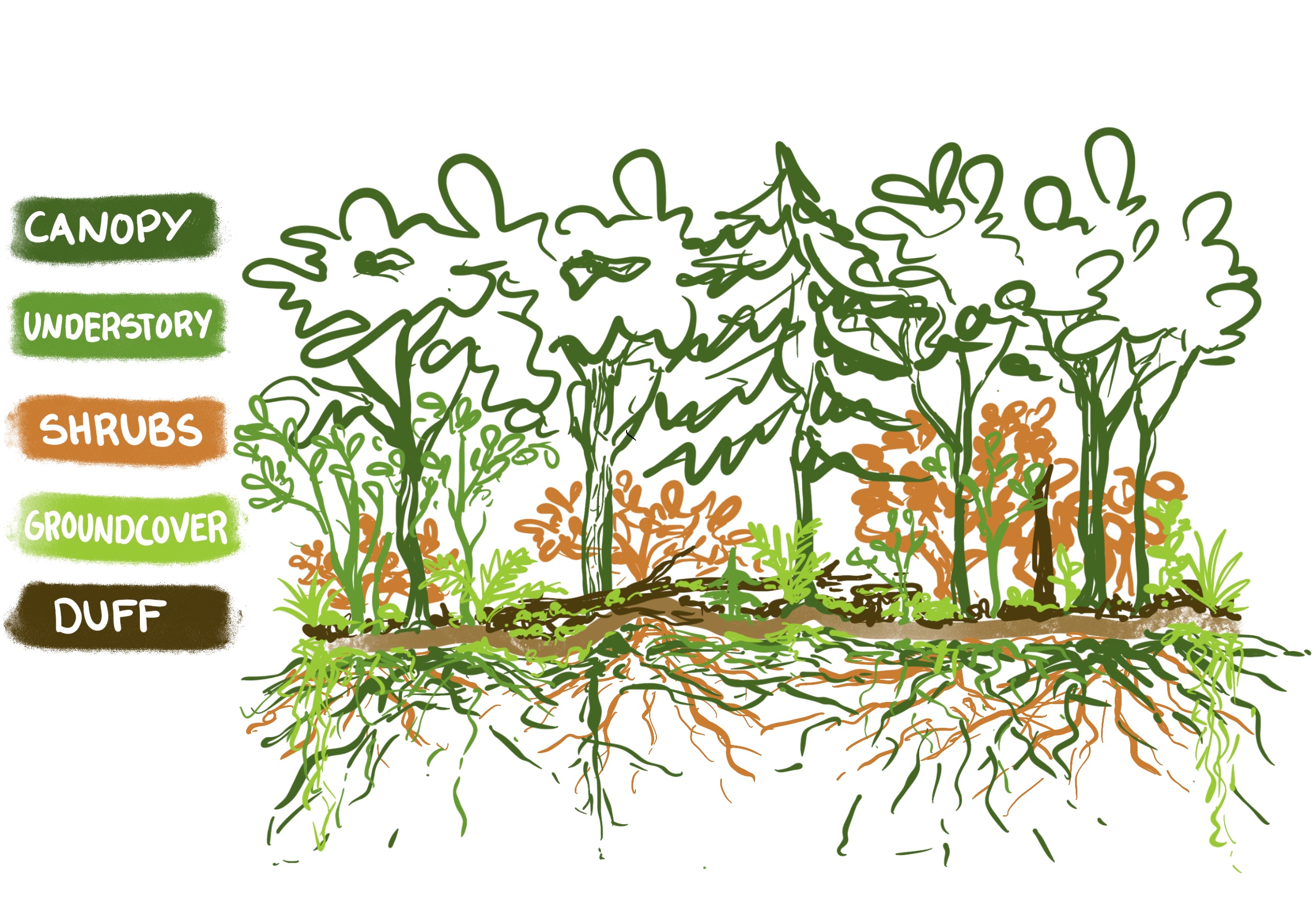
The five vegetative levels of a healthy streamside buffer. Graphic provided by Stream Wise.
A healthy streamside includes five “layers”: duff, herbaceous growth, shrubs, understory, and canopy.
- Duff (pine needles, woody debris, leaves): disperses rainwater to minimize water channels from forming and carrying sediment to stream.
- Herbaceous growth (Grasses, ferns, moss, wildflowers): stabilizes topsoil (roots can grow to 16 feet deep or more!) and supports pollinators
- Shrubs: stabilize soil and support pollinators
- Understory (young trees, the next generation of canopy trees)
- Canopy trees (adult trees): shade the river to cool it down (fish, aquatic insects) and deep roots stabilize the bank to prevent massive flooding or high water conditions from ruining streambank.
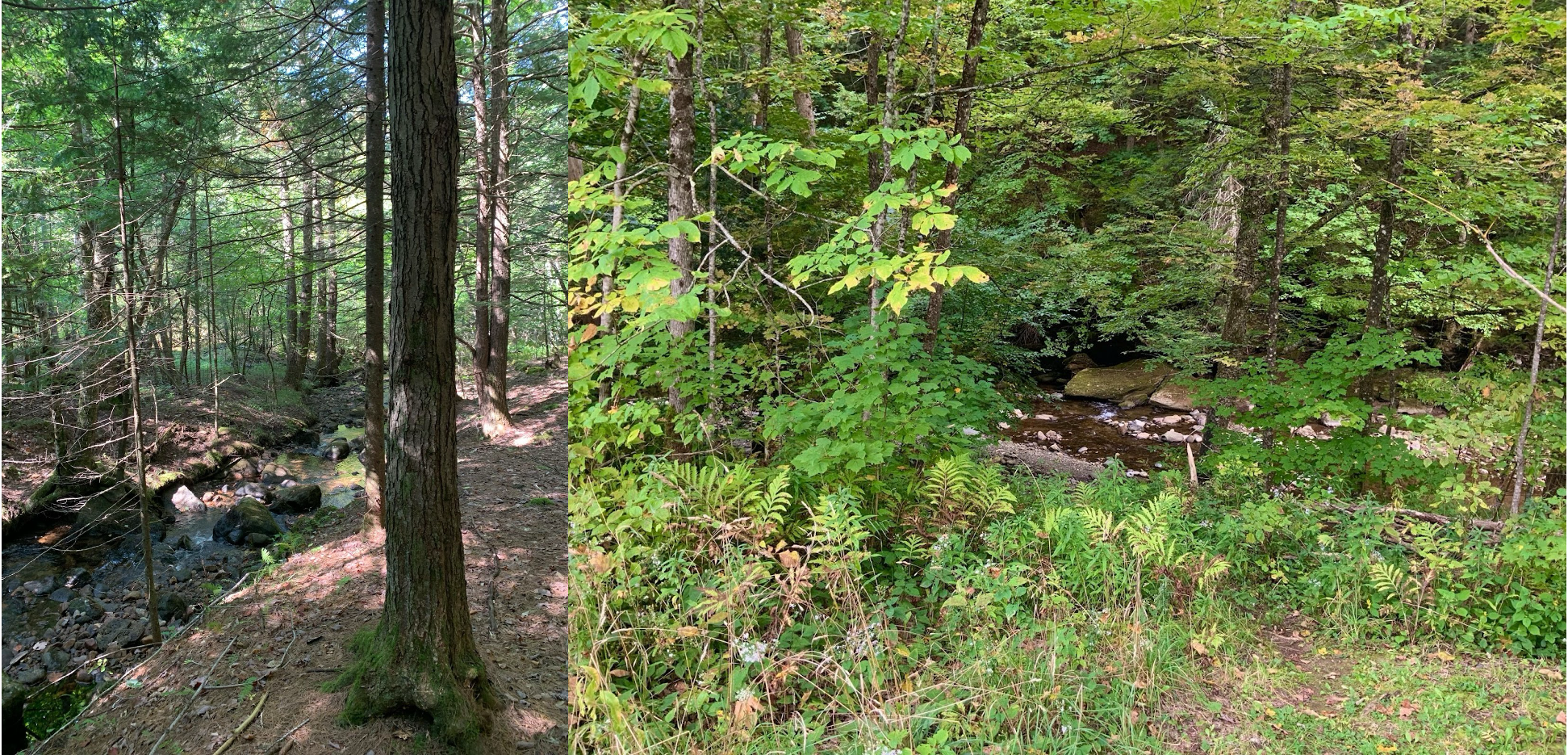
Some riparian zones may naturally feature more or less of the layers listed above as the forest matures: the important thing is that these layers are allowed to establish.
When streambanks aren’t protected with a buffer, fish, aquatic insects, and pollinators lose habitat and rivers and streams tend to erode and can migrate erratically since they have no solidified banks. Sediment deposits can be washed into the stream and disrupt healthy sections of stream further on. In the case of rivers with homes or roads nearby, this can create ice jams and exacerbate flooding.
Over time erosion or streambank failure can happen. When an injury like this occurs to the river, it can take years and sometimes physical intervention to build the stream back up to its natural state.
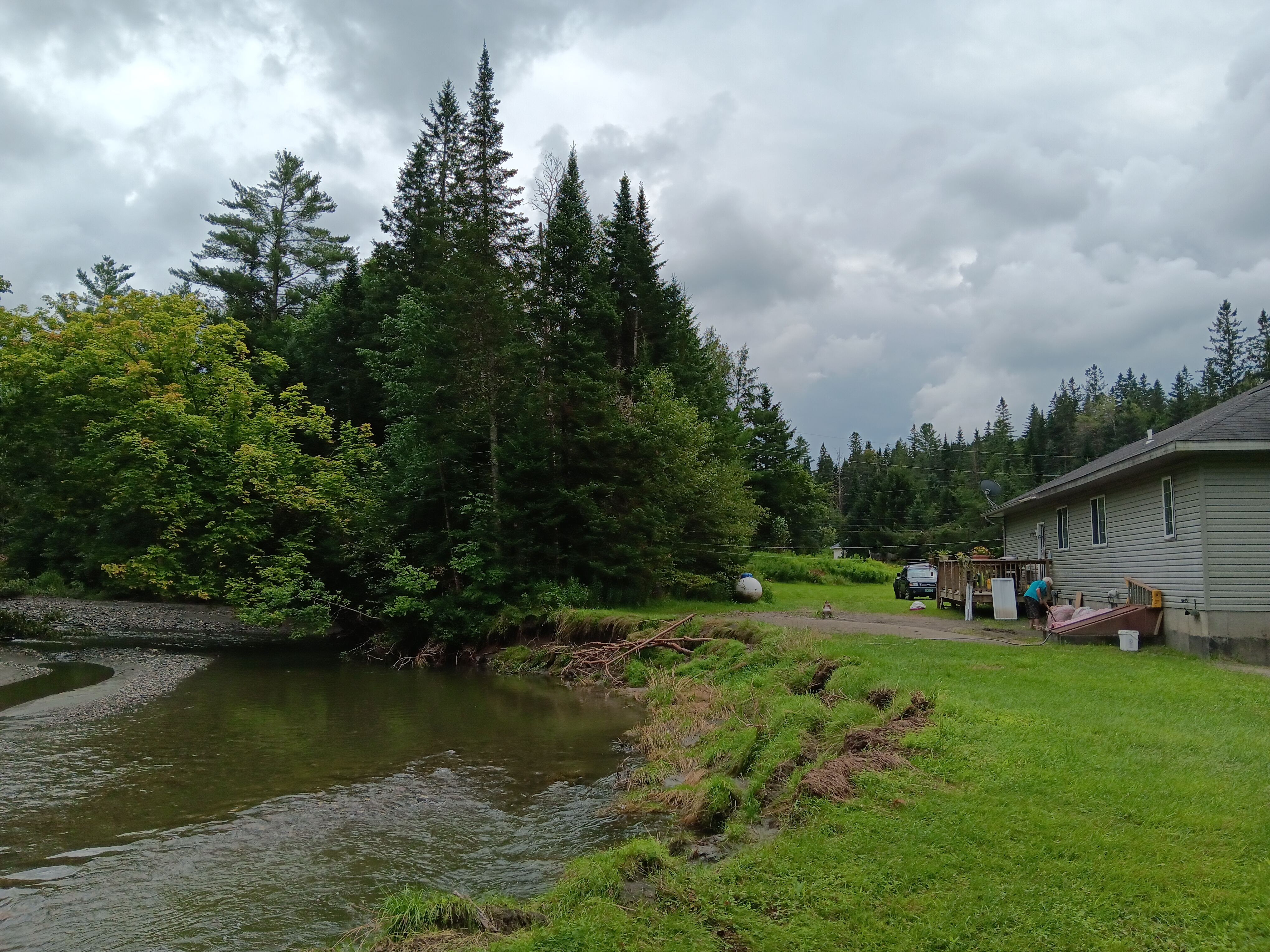
A mowed lawn right up to the stream like this has a tendency to turn into the photo on the right, releasing sediment into the stream and allowing the river to migrate more than it would naturally. It also alters the habitat and can make it too hot for many of our native aquatic species.
Support our biodiverse habitats work for wildlife and their habitats. Give with confidence today!
Some of the invasive species we commonly encounter in the northern Adirondacks are easier to target as we head into the colder months. If you know your property has invasives and aren’t sure how to manage, the Adirondack Park Invasive Plant Program has a comprehensive list of invasives and best management practices. We also share solutions in our past blogs on buckthorn, honeysuckle, barberry, knotweed, and autumn olive.
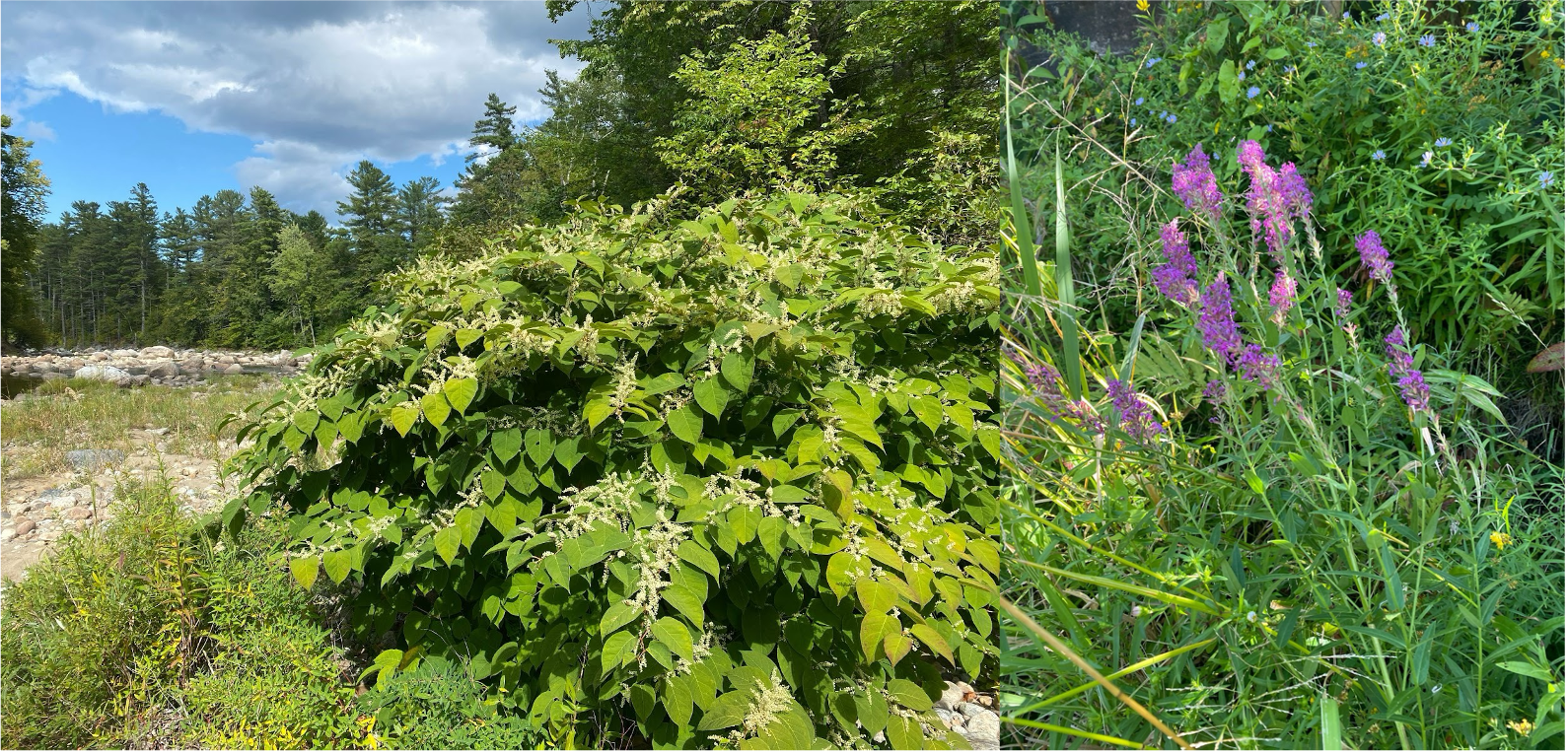
Keep an eye out for invasive species especially in revegetating areas. Japanese knotweed (left) and purple loosestrife (right) are common invasive species in the Ausable watershed.
Of course, the ability to use and enjoy your yard is a part of property ownership, and this can be done while still maintaining a healthy stream buffer or other no-mow zone.
- If the land has been mowed in the past, revegetation may start with dense brush or shrubbery. If this is disruptive to land use, consider expediting succession by planting fast-growing trees such as willows and aspen. Learn more about native trees and shrubs with the Ausable Conservation Nursery or check out other native plant nurseries in NYS for resources on planting on your property.
- While cutting down canopy trees for a view is a risk to the integrity of the streambank, cutting “windows” to view the water by trimming the lower ⅓ of branches on your canopy trees will not cause risk to these trees.
- To maintain river access, keep paths to a minimum and cut no wider than 6 ft paths. Here is an example of a mowed access path and on the left, a no-mow zone that will become forested over time.
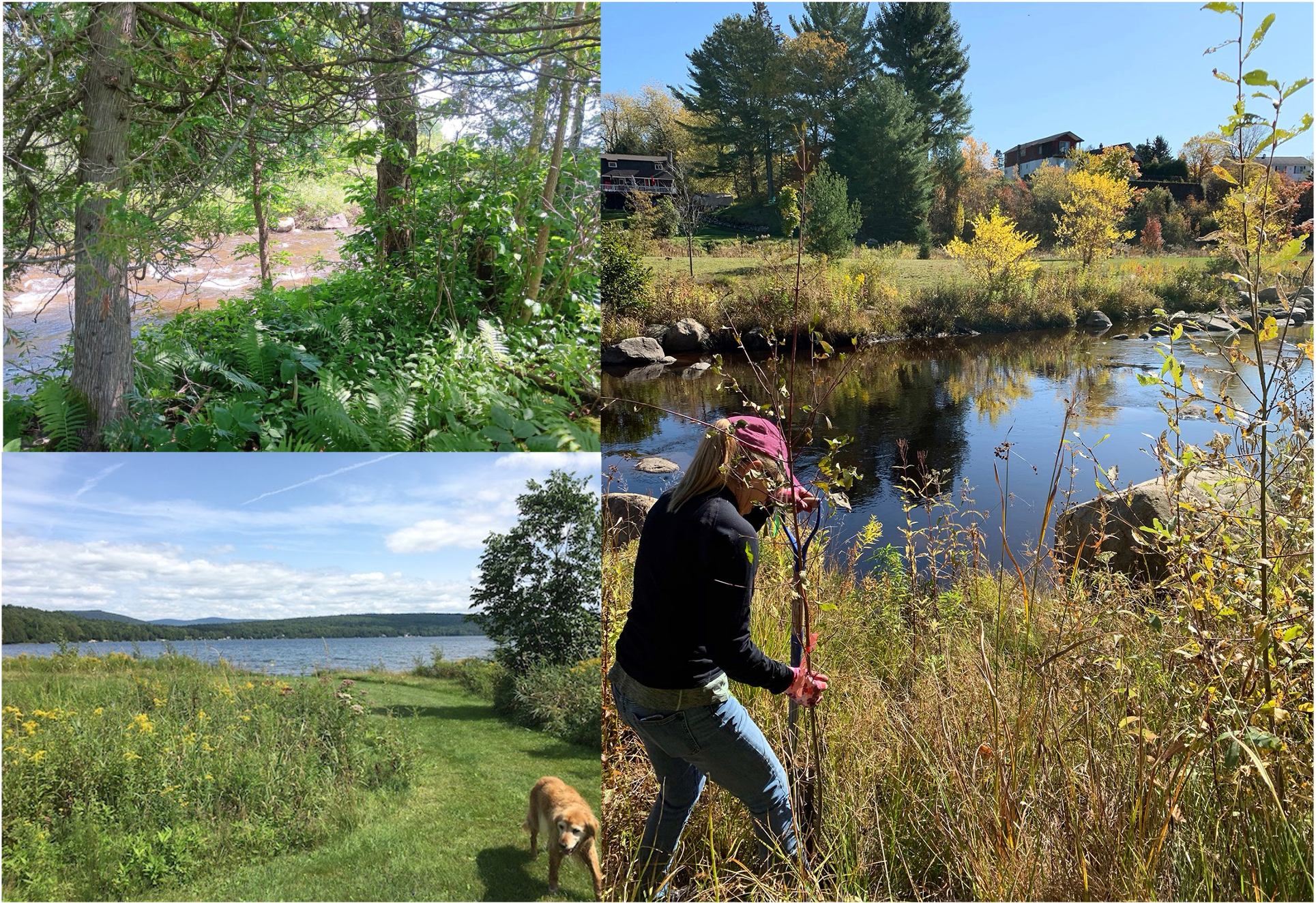
The Stream Wise toolkit provides landowners with tips that can be personalized for use on each unique property.
Ausable Freshwater Center utilizes the Stream Wise toolkit to educate landowners who aren’t sure what it takes to make a good stream buffer. Assessment and a stream buffer report are free, email us at contactus@ausablecenter.org or visit the Stream Wise site to learn more.
Story by Naomi Hodgson, River Steward. Photos courtesy of Stream Wise.
Sign-up for our e-newsletter to get weekly updates on the latest stories from the Ausable Freshwater Center.
